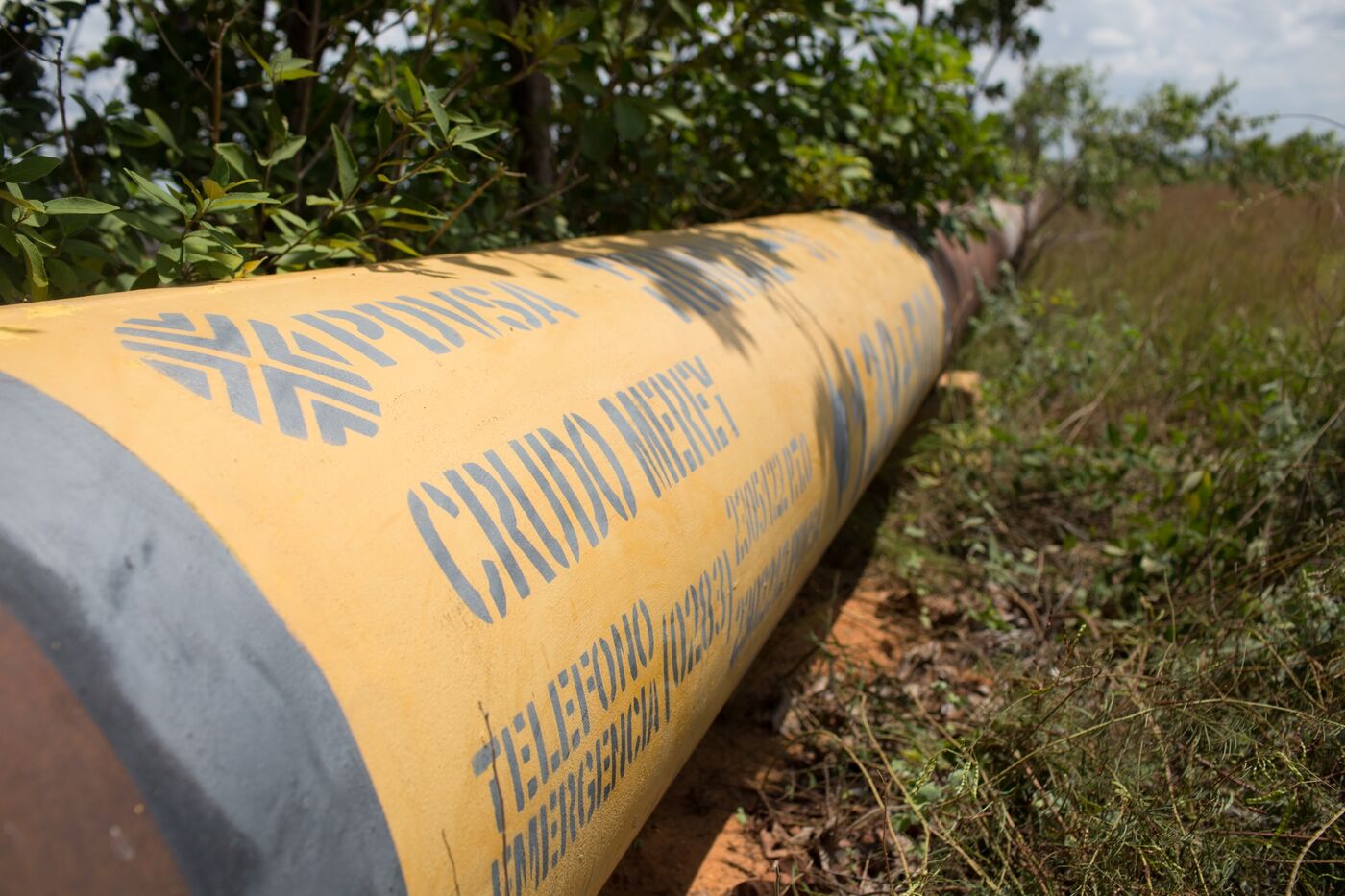Russian Oil Cutoff Boosts Outlook for Venezuelan Output Revival
- Consultancy says output could nearly double with U.S. waiver
- Others are more skeptical on potential to ramp up production
The prospect that the U.S. could ease sanctions on Venezuela’s state oil producer to offset Russia’s cutoff from global markets has observers wondering how much crude the South American nation is able to add to a market roiled by the war in Ukraine.
The most optimistic outlook from energy consultancy IPD Latin America sees production nearly doubling by year-end if exports from the South American country can flow freely and it’s able to import much-needed parts and equipment for its crumbling oil industry. Skeptics, however, say it would take billions of dollars of investment over several years before Venezuela can increase output substantially.
The relevance of bringing Venezuelan barrels back to the market came to the fore again as sweeping sanctions on Russia have isolated its massive oil industry, with U.S. President Joe Biden on Tuesday saying imports of Russian fossil fuels will be banned. In an unusual meeting over the weekend, U.S. and Venezuelan officials discussed a waiver of some sanctions so that the OPEC nation can resume oil sales, according to people familiar with the matter.
See: Biden Team Weighs Venezuela Oil Sales as U.S. Nears Russia Ban
Assuming talks with the U.S. eventually lead to a quick unwinding of bans on doing business with Petroleos de Venezuela SA and the government of President Nicolas Maduro, Venezuela’s output could reach 1.5 million barrels a day, said David Voght, managing director at IPD. That’s up from about 800,000 now.
IPD’s base-case outlook, however, is that Venezuela rebounds to a more modest 1.1 million barrels a day by the end of the year, provided that it can continue importing a lighter form of oil known as condensate to help extract heavy crude in the Orinoco region, and that service contractors continue to offer support services.
“Lifting of sanctions or relief of sanctions will require serious negotiations that pose challenges, among them the China and Russian oil investments in Venezuela,” Voght said. “There are many ifs. We still need to see if Maduro and Biden will negotiate.”
Production of 1.5 million barrels a day would equal what Venezuela pumped in 1950, before more than doubling that in the early 1970s. Maduro said talks with U.S. officials were cordial and that the country was ready to export more oil. PDVSA is prepared to lift output to “one, two, three million barrels a day for the world,” he said late Monday.
Recovery Mode
Venezuela oil output has rebounded from 2020's 77-year low
Source: Venezuela's government statistical data (Pode), OPEC secondary sources
For Francisco Monaldi, a lecturer in energy economics at Rice University’s Baker Institute for Public Policy, Venezuela currently has the capacity to produce between 900,000 and a million barrels a day, but to get beyond that will require years of massive investments. He pointed to a plan drafted by oil experts from Venezuela’s opposition, which called for $12 billion a year over five to seven years in order to add 2 million barrels a day.
“To put it into perspective, that has never been achieved in the history of Venezuela, such a fast increase,” said Monaldi. “The best average for at least a few years was about 250,000 barrels a day.”
Still, there could be a move to pump more oil in Venezuela if private-sector producers feel comfortable investing in the country. Each well in the Orinoco heavy-oil region only costs about $6 million to drill, and can produce 1,000 barrels a day, allowing producers to recover costs fast, he said.
Crude has surged past $100 a barrel in New York and London following Russia’s invasion of Ukraine.
“This is a spectacularly profitable business at this price range,” Monaldi said.
Nelson Hernandez, an energy consultant in Caracas, was more pessimistic on PDVSA’s prospects. Venezuela could only reach 1.5 million barrels a day in 2024 if action is taken immediately.
“That would require 50 rigs working every day starting today, and rigs are scarce in the world,” he said.
But even if Venezuela only keeps output stable, it could still provide supply relief to U.S. refiners including Valero Energy Corp., Marathon Petroleum Corp. and PBF Energy Inc. if sanctions are lifted, said Jaimin Patel, a senior credit analyst at Bloomberg Intelligence who covers PDVSA.
“If just a slice of that comes to the U.S., it would make a difference,” he said.
— With assistance by Lucia Kassai


Keine Kommentare:
Kommentar veröffentlichen